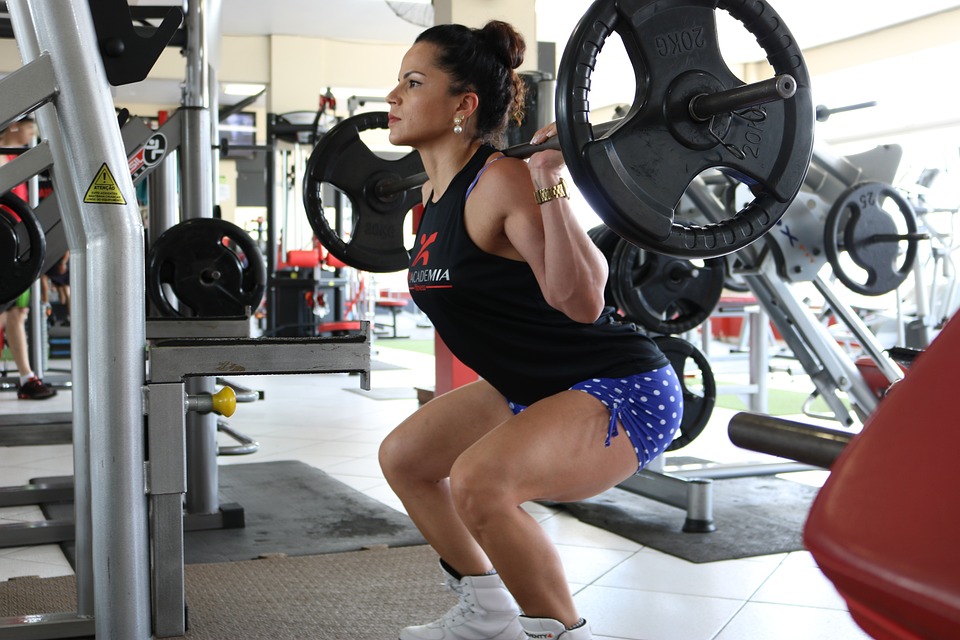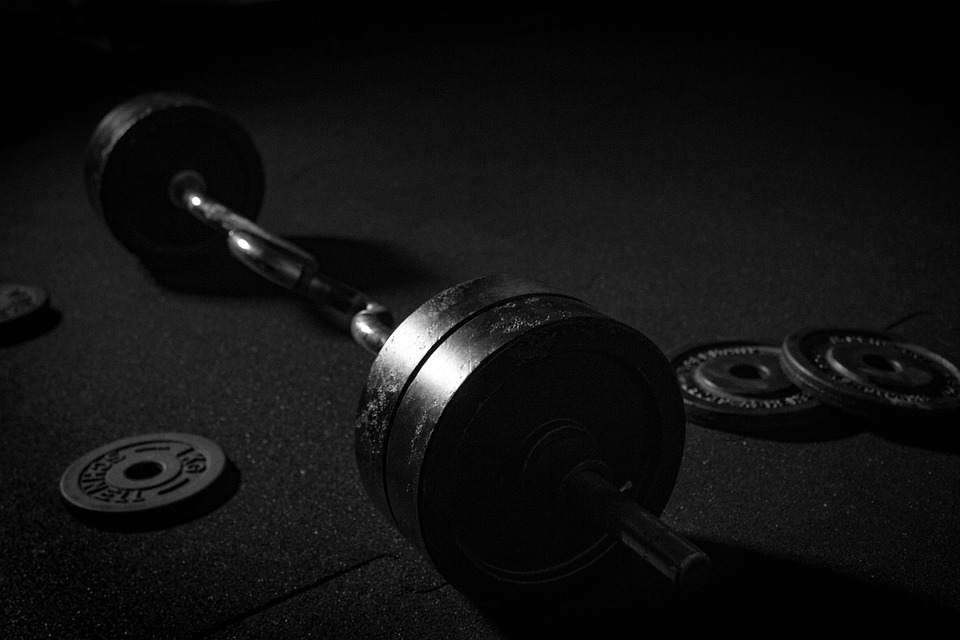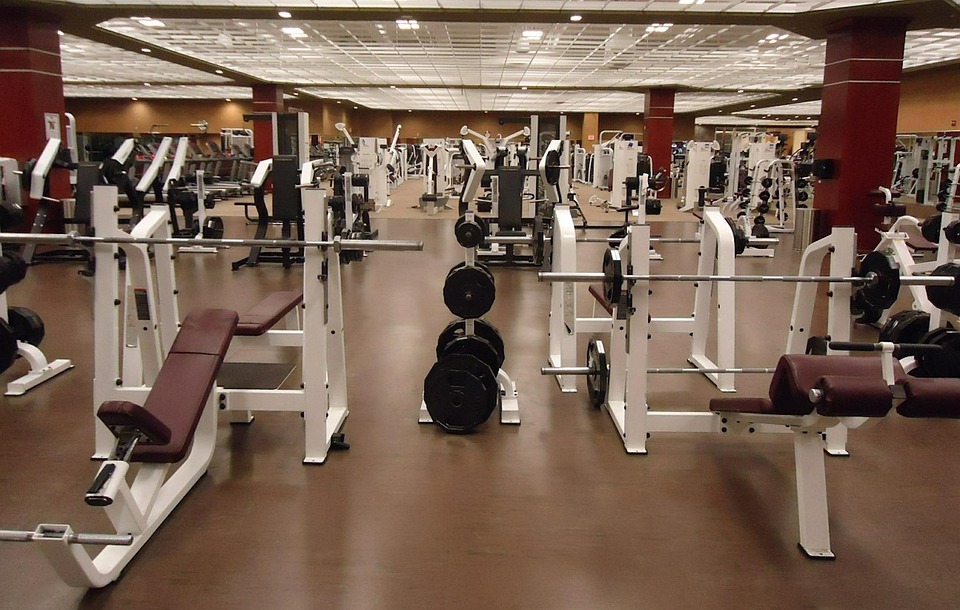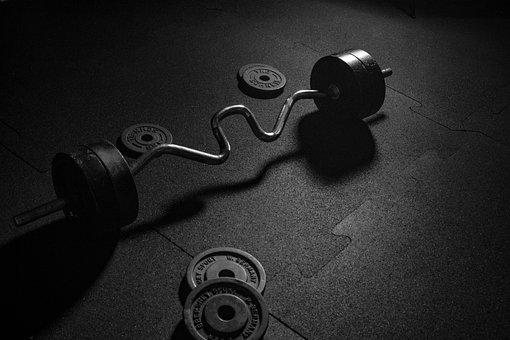
Lifting weights has never been more popular.
It builds muscle, boosts athleticism, and improves your health. It can even add years to your life.
If avoiding strength training is something you’ve done because you feel you lack the ability or motivation to do it, don’t stress. It’s never too late to start lifting weights.
Nowadays, people of all ages are using weightlifting to improve their physical performance and appearance.
Now it’s your turn.
Here are the Top 11 Benefits of Lifting Weights:
Bigger Muscles
The majority of people go to the gym with the goal of achieving a shredded physique.
Lifting weights is more about looking good than being athletic. And there’s no shame in wanting to look great.
You can build a respectable amount of muscle from cardio training even if you are a complete beginner to exercise. The smallest changes to an unconditioned body can cause physical changes in the skeletal muscle fibers.
Although cardio at first will help your body grow, eventually your body will get used to the demands and it will no longer be as effective.
Spot training
You can’t spot-reduce body fat. But you can spot build muscle. You can improve your appearance by doing strength exercises that target specific muscle groups.
If you want to increase the size of your chest, you can do bench presses. A tighter butt comes from lunges and hip hinges. And if you’re trying to tone your arms, you can do some bicep curls, rows, or tricep extensions.
Strength training to improve muscle growth does not need to be difficult. In fact, it’s anything but. All you need is a plan, some commitment, and a few general guidelines to follow:
- Choose a few exercises that cover all major muscle groups. Around 6-10 is enough.
- Make sure you follow your program 2-3 times per week.
- Aim to reach 10 total sets per muscle, per week.
- Lift weights that are challenging but not exhausting for 6-15 reps. Once you find it easier, increase the weight.
- Don’t train to absolute fatigue. Stop each set for 2-3 reps before failure.
Strength training isn’t about looking like a bodybuilder. The goal is to develop your physique to a point where you feel proud of it.
You don’t need to spend all your time lifting weights. Choose either to do complex workouts from champion physique athletes or to follow Instagram ‘stars’.
According to research, you can make significant improvements to your muscle mass in just a few weeks. In less than a month, you could gain 3-4 pounds of muscle mass.
Some studies suggest that 10 weeks of strength training can help you gain up to 12 pounds of muscle.
Optimal Sports Performance
To be a top-level athlete, you need to optimize every aspect of your lifestyle. You can’t improve your performance if you don’t take care of yourself by eating, living, and training properly.
Across many sports, weightlifting is used as a means of preparation and conditioning. No matter what your favorite sport is, strength training is a necessary part of becoming a better athlete. Whether you’re lifting weights, doing bodyweight exercises, or using resistance bands, adding strength training to your routine will help you become faster, stronger, and more agile.
Strength training generally improves athleticism in most people. HIIT is a great way to improve your overall sports performance because it is very adaptable and versatile. There are several different systems and protocols that you can use within HIIT to help you improve in specific areas in that you may be struggling.
Transfer of strength training
Athletes in various running sports, as well as youth athletes and even those competing in skill-based sports, are using weightlifting to improve their performance.
Training that focuses on increasing speed and power can also improve your explosiveness.
High-intensity workouts help improve your stamina and cardiorespiratory fitness. Heavy strength training leads to the development of maximal strength, which can act as a foundation for power and robustness.
The benefits of strength training can be specific to the type of training. It’s not just about lifting big all the time.
The force-velocity relationship states that it takes more time to recruit the maximum number of muscle fibers to lift a heavier load.
This is a great way to develop the ability to produce maximum force, take voluntary actions, adapt the muscle-tendon unit, and improve technique when working with high loads.
Heavy v lightweights
While lifting heavy may improve some ballistic activities, it is not always the best option for optimizing these activities.
Weights that are lighter can be lifted more quickly and this transfers better to speed and explosiveness. However, they may not always improve the ability to produce maximum force – an important aspect of being athletic.
Athletes typically need to be strong, fast, AND powerful. To achieve optimal results, training should be structured to vary load, reps, and speed periodically.
Improved Metabolic and Vascular Health
No matter what your health is like or how fit you are, lifting weights will help improve your condition rapidly. At least one hour of strength training each week has been shown to have positive effects on heart health, according to various studies. This came from a study of almost 13,000 adults.
In addition to this, research has found that regular resistance training can also have significant effects on blood pressure, inflammation, blood sugar regulation, diabetes management, and reducing the risk of metabolic syndrome.
Strength training is not a great way to burn calories, but it can help with fat loss by developing healthy habits. Regular cardiovascular exercise is a great way to improve your overall health. It can help you lose weight, increase your energy levels, and improve your muscle mass.
If you are overweight, you are more likely to develop certain diseases, including those that affect your metabolism and blood vessels. Aerobic exercise has always been the ‘go-to’ for weight loss, but research shows that strength training is a valuable tool in the war against fat.
Some research suggests that a workout regimen that combines both strength and aerobic training may lead to more significant fat loss than aerobic training alone.
Now don’t you have a good enough reason to start lifting weights?!
Better Mood
Sometimes we feel a little down. For people who experience anxiety, low mood, and mild depression, daily life can be difficult. But hitting the weights can help.
Recent research has shown that weightlifting can improve mental health. Resistance training on a regular basis not only helps to keep you motivated, but also promotes staying engaged and interested, and can improve how you feel about yourself.
If you are experiencing symptoms of a generalized anxiety disorder (GAD), doing some strength-training exercises may help you to better manage those symptoms. One study found that symptoms decreased for 37 women after taking part in twice-weekly resistance training classes.
The study found that resistance training can lead to a reduction in depressive symptoms. Studies have found that resistance exercise training can significantly reduce depressive symptoms in adults, regardless of their health status.
Lifting weights is not a ‘cure’ for mild depression, but it can have significant health benefits for people who suffer from it on a day-to-day basis.
Although weightlifting can’t cure severe mental health issues, it can help alleviate symptoms. Training should not be viewed as a substitute for taking medication or any other type of treatment you may be receiving. If you are looking for mental health advice, you should consult your local health professional.
More Confidence
There’s nothing more rewarding than beating your personal best in the gym. The feeling of success and power you get from lifting a heavy barbell and proving yourself to the other people in the weight room is one of the most satisfying things you can achieve athletically.
Although most people associate strength training with physical benefits, there are also emotional and psychological benefits to be gained from this type of exercise. Weightlifting not only changes your body but also boosts your self-esteem and confidence.
Both direct and indirect research suggests that there is a connection between how active someone is and how much self-esteem they have. Not only is being physically active good for you, but it can also make you seem, fitter, even if your actual fitness levels aren’t that high.
Training for strength can help you connect with others who have similar interests. This can make your social circle bigger and more enjoyable.
The great feeling you get from completing a difficult workout, combined with the biochemical “feel-good” release of endorphins will make you smile and feel confident very soon.
A Stronger Brain
Like many parts of the body, the brain is affected by aging, but lifting weights can help to slow down the process.
Most of the research on the relationship between exercise and brain health revolves around the benefits of aerobics. Good news for gym rats: A growing body of research suggests that lifting weights can have a positive impact on mental health. Regular resistance training helps improve critical thinking skills and memory recall, especially when you start at a young age.
When young people take up weightlifting, it strengthens their brains, making them less likely to experience Alzheimer’s disease or other forms of mental decline. This may be because weightlifting seems to increase levels of BDNF, a protein that helps create new brain cells.
Practical Application
- Find a training split or program that suits your needs and stick to it. There’s no specific exercise that will make you smarter or quick-witted, but the overall benefits are too large to ignore.
Cleaner Blood
Worried about your cholesterol levels? Strength training can be a solid natural remedy. A study of women in their twenties found that 14 weeks of heavy strength training resulted in significant decreases in blood cholesterol levels, including a strong trend towards a more favorable ratio of “bad” to “good” cholesterol.
Lifting heavy weights is an effective way to reduce body fat. A waistline that is less slim has been linked with a higher risk of developing heart disease or other cardiac problems. The list goes on and on.
Practical Application
- If you’ve only been pounding the pavement, work out how to incorporate lifting with cardiovascular exercise. The synergistic benefits alone are worth mixing it up when it comes to your preferred style of training.
Activated Genes
The genes you’re born with appear to have less of an impact on your destiny than previously thought. While you cannot change your genetic blueprint, strength training can activate and change certain genes. It’s like changing the software in your hardware. The genes don’t change, but the way they act does.
Scientists believe that a change in gene expression could explain why resistance training is connected to better immunity, stress response, and protein synthesis.
While there is still much to be learned on the topic, one finding seems fairly clear – genes are healthier when muscles are stronger.
Practical Application
- Unfortunately, no workout routine will grant you superpowers (though the right program comes close) or change your hair color. Consistent resistance training affords a slew of “silent” health benefits like better genetic behaviors.
Reduced Depression
Iron may be the best therapy, with medicine ball slams being a close second. Aerobic training, or no exercise at all, has been shown in several studies to be worse than resistance training when it comes to reducing the symptoms of generalized anxiety.
In a particularly promising trial of 30 sedentary women, 60% of the participants showed remission of signs of worry and anxiety, compared to 40% for the aerobic training group.
The studies are promising, but does not recommend it for everyone and is not medical advice. You should speak to a medical practitioner if you think you might be experiencing symptoms of depression.
Practical Application
- Hitting the gym to improve your mood will only work if you actually like what you’re doing. Make sure you’re on a routine that makes lifting weights fun and not a chore of its own.
Fewer Strokes
The famous Interstroke study has listed physical inactivity as one of the five key risk factors responsible for 80 percent of the world’s strokes, and in this case, more is better.
According to a meta-analysis of 23 studies, adults who practice regular physical exercise have a 27 percent lower risk.
There is a lot of literature on the subject of exercise and stroke risk, but not much of it differentiates between aerobic and resistance training. However, research has shown that grip strength is a strong indicator of stroke risk, so resistance training is a good idea.
Practical Application
- Like many other preventative benefits of weight lifting, you can’t really target stroke risk reduction through training. For general well-being, find a balanced routine that includes some form of cardio as well, possibly at the end of your session.
Healthy Aging
In your teens and twenties, you are in your prime. You are strong, swift, and able to construct large amounts of muscle.
You are not only able to perform well, but you can also handle a lot of training and recover quickly. But this changes as you get older. When you reach the age of around 40, your body begins to change.
The loss of lean muscle tissue is called sarcopenia. There is also a decrease in muscle strength called dynapenia.
This text states that as a person ages, they will slowly start to lose muscle mass. If you are 60 years old, you could have lost up to 13% of your muscle. By the age of 80, up to half of all brain cells could have died.
There are a number of factors that can contribute to sarcopenia, including poor diet, medication, and chronic illness. The biggest risk factor is being inactive and not doing resistance exercise.
Although aging is inevitable, strength training can help older adults stay healthy and delay the effects of aging.
Planning to do some resistance training can help to keep muscle strength and lean mass as we get older. This has been demonstrated in studies.
It has been found that progressive, high-intensity strength training is the most effective method for combating sarcopenia. Exercising regularly can help to prevent age-related muscle weakness.














